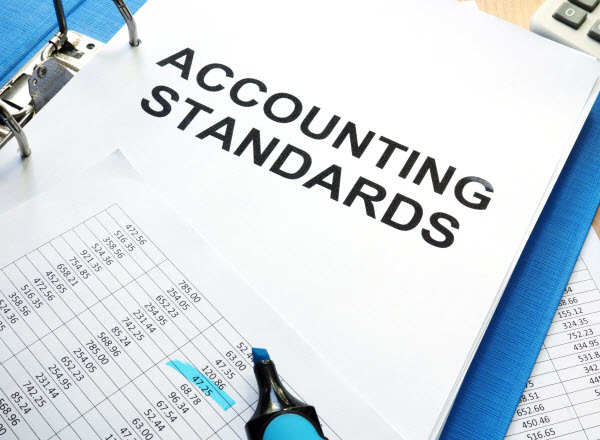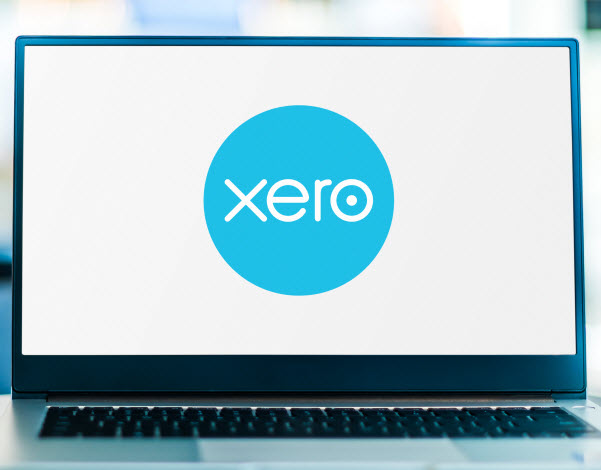A look at some key accounting terms (and glossary) for the not-for-profit sector

There are many terms describing processes, reporting requirements and necessary legislative obligations in the accounting industry. In the area of accounting that we work in, there are additional accounting terms for a not-for-profit specific to what we do. We take a look at some key accounting terms (and glossary) for the not-for-profit sector.
Here are our top NFP accounting terms that you should know, plus a glossary we have borrowed from CPA Australia for a comprehensive digital dictionary of NFP accounting terms.
AASB
AASB stands for the Australian Accounting Standards Board. The board is a Commonwealth entity under the Australian Securities and Investments Commission Act 2001 and is responsible for issuing and maintaining Australian accounting standards.

The functions of the AASB are:
- to develop a conceptual framework for the purpose of evaluating proposed standards;
- to make accounting standards under section 334 of the Corporations Act 2001;
- to formulate accounting standards for other purposes;
- to participate in and contribute to the development of a single set of accounting standards for worldwide use; and
- to advance and promote the main objects of Part 12 of the ASIC Act, which include reducing the cost of capital, enabling Australian entities to compete effectively overseas and maintaining investor confidence in the Australian economy.
There are currently 58 AASB Standards with 26 recent and pending pronouncements. Many of these standards are complex and technical but not-for-profits must comply. This is where the NFP accounting rubber meets the road and where AFG’s expertise can help. We will unpack these standards in a future blog.

Not-for-profit grants
Grants come in many shapes and sizes – from large, long-term whole-organisation-funding contracts through to one-off projects. They can be offered via a competitive tender or selective tender process, and there may even be the odd few out there that are granted because “we’ve always done it that way.” Government or statutory authorities can offer grants to philanthropic organisations, foundations and Private Ancillary Funds or corporate businesses. Some NFPs make grants to other NFPs.
GrantConnect offers a list of available grant opportunities that are open for application, and institutes like Strategic Grants offer training to help build the best possible grants program within your organisation.

ACNC
The ACNC is the Australian Charities and Not-for-profits Commission that regulates charities throughout Australia. Its purpose is to maintain, protect and enhance public trust in the not-for-profit industry, support and sustain the sector and reduce unnecessary regulatory obligations.
The ACNC registers organisations as ACNC charities on the ACNC portal and helps them meet their obligatory requirements by offering advice and guidance. It also helps the public understand the work within the not-for-profit sector. It works with state and national governments to build a reporting framework for not-for-profit initiatives and lists the necessary ACNC governance standards.

Public Benevolent Institution
A Public Benevolent Institution (PBI) is one of the charity subtypes that can be registered with the ACNC.
A PBI works to relieve poverty, sickness, suffering, distress, misfortune, disability or helplessness. Examples of PBIs include some hospitals and hospices, disability support services, aged care services and low rental or subsidised housing for people in need.
A Public Benevolent Institution can apply for charity tax concessions and may be eligible for deductible gift recipient (DGR) status with the Australian Taxation Office (ATO).
If you want your charity to be endorsed as a DGR under the PBI category, your must first register your charity as a Public Benevolent Institution with the ACNC and satisfy other requirements of the ATO.

Deductible Gift Recipient (DGR)
A Deductible Gift Recipient or DGR defines an organisation that can receive tax-deductible donations. Public appeal style fundraising is often most effective for Deductible Gift Recipient (DGR) charities that can offer a tax deduction to their donors. Charities are a subset of the not-for-profit sector. Individual and corporate donors could deduct the donation amount from their taxable income on their annual tax return.
The ACNC regulates charity registration and defines the category a charity would fall under. An organisation must meet eligibility criteria to be DGR endorsed, which is decided by the Australian Tax Office.

National Standard Chart of Accounts
We are experts (in fact, we have provided training in NSW and VIC) on the National Standard Chart of Accounts or NSCOA, which is a free and accessible data entry tool, and dictionary for not-for-profit organisations agreed to by all Australian governments. The NSCOA provides a common approach to how not-for-profits record and report accounting information and has been implemented by several state governments. Originally designed by QUT, the NSCOA is now owned by the ACNC.

Xero
Xero is cloud-based accounting software. It is one of the world’s most popular accounting software solutions as it’s accessible from any device, 24/7. Xero for not-for-profits helps keep track of cash flow and can share reports with key stakeholders, board members or donors. It can facilitate payroll from anywhere in the world and integrates with other not-for-profit applications that help with CRM, bookkeeping, keeping track of volunteers and fundraising management.
AFG is a Xero Advisor Certified Practice and an early adopter of Xero whose team members have, over the years, become experts in the cloud-based system with a dedicated focus on NFP accounting.

AICD
The Australian Institute of Company Directors (AICD) is an organisation dedicated to the theory of corporate governance and how to apply it within the various sectors and industries across Australia. The AICD has also launched a valuable and beneficial new data tool, the Not-for-Profit (NFP) Governance and Performance Study report, which highlights the challenges NFP directors face and discusses specific topics relating to NFP boards. An alternative to the AICD is the Institute of Community Directors Australia that also offers a wealth of accounting governance tools and resources.

CPA Australia’s accounting glossary
We have also borrowed the CPA Australia’s (Certified Public Accountants) concise glossary for some additional accounting terms you may come across in your day-to-day not-for-profit business operations:
| Accrual accounting | Recognising income and expenses when they occur rather than when income is received or expenses paid |
| Accounting entry | The basic recording of business transactions as debits and credits |
| Accounting period | A period for which financial statements are prepared – normally monthly and then annually |
| Amortisation | The process by which the value of an asset is gradually reduced (based on its expected life) |
| Asset | Anything having a commercial value that is owned by the organisation |
| Break even | The amount in either units or dollar value that the organisation needs to achieve before a profit is generated |
| Budget | A financial plan for an organisation, typically done once a year |
| Capital | The net worth of the organisation (interchangeable with the term equity) |
| Capital expenditure | The amount of money that is allocated or spent on assets |
| Cash accounting | Accounting for income and expenses as they are received or paid |
| Cash flow | The flow of cash into and out of the organisation |
| Contributions | Income from grants, donations and membership fees |
| Cost of goods sold | The total cost of all goods sold during the period (COGS) |
| Creditors | The money that you owe your suppliers |
| Current | Refers to the time period of less than 12 months which assists in allocation of assets and liabilities |
| Debtors | The money that is owed by your customers to you |
| Deferred tax | The postponement of tax payable to a future period |
| Depreciation | The write-off of a portion of a fixed assets value in a financial period |
| Equity | The net worth of the organisation |
| Expenses | The costs associated with earning the organisational income |
| Financial accounting | Preparing financial statements for general purposes rather than tax requirements |
| Financial ratio | The method in which an organisation can measure the financial health and compare their organisational operations to those of similar organisations in the same industry |
| Forecasting | The process of predicting the future financial performance of an organisation |
| Gross profit | The difference between net income and cost of goods sold |
| Inventory | The stock that an organisation holds to sell |
| Intangibles | Assets that do not have a physical form, e.g. patents, brands, etc. |
| Liability | The amount the organisation owes to external stakeholders |
| Margin | Profit from sales before deducting overheads, often referred to as gross margin; or after all expenses, often referred to as net margin |
| Mark-up | The percentage by which the sales price exceeds the cost |
| Mutuality principle | A person’s income consists only of monies derived from external sources. Accordingly, subscriptions and contributions from members for particular services provided by a club of association are generally excluded from the assessable income of that club or association. |
| Net income | The total of all income less any expense directly incurred when earning that income, such as sales discounts and commissions |
| Net profit (surplus) | The amount remaining after all expenses (including cost of goods sold) are deducted from total income |
| Non-current | Refers to the time period of greater than 12 months which assists in allocation of assets and liabilities |
| Non-reciprocal | Transfers of resources from one party to another where the transferors do not directly receive approximately equal value in return. This includes everyday transfers such as gifts, donations, government grants and taxes. |
| Overheads | Costs not directly associated with the products or services sold by the organisation |
| Program services | Segregated activities that can be clearly identified and recorded separately |
| Purchase order | A commercial document issued by a buyer to a seller, indicating the type, quantities and agreed prices for products or services the seller will provide to the buyer |
| Receivables | Amounts that are owed to an organisation, also known as debtors |
| Reciprocal grants | A grant that has an agreement specifying the conditional use of the contribution |
| Revenue | The income the organisation earns from its activities, including grants, donations, fundraising and any trading income |
| Retained earnings | Profits that have remained in the organisation |
| Stock | Goods that the organisation purchases to sell (also known as inventory) |
| Working capital | The excess of current assets over current liabilities |
| Work in progress | When an order has been taken from the customer and is in the process of completion |
The terms we have highlighted in this blog are only a few glossary words that crop up in not-for-profit accounting. Highly skilled specialists are needed to discern the NFP accounting services environment – whether as consultants or an entire outsourced finance department.
Contact the AFG Team today to discuss your NFP accounting needs and how we can help you.
